According to the Brazilian Animal Protein Association (ABPA) (2023), Brazil is the fourth-largest producer of pork in the world, with an estimated production of 4.8 million tons in 2022.
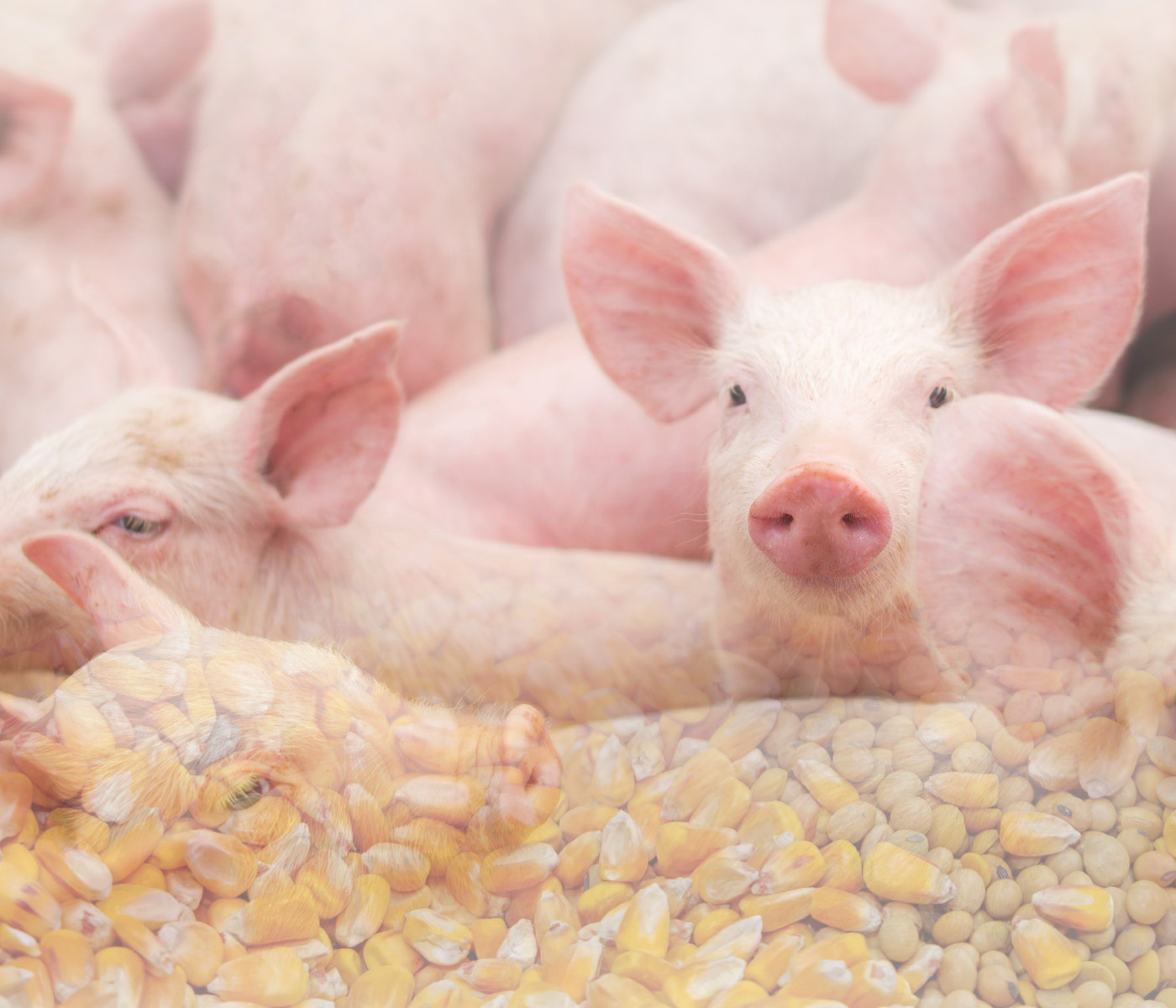 05 Sep 2024
05 Sep 2024
Expanded diets for swine: nutrient utilization

In this context, feed processing plays a crucial role in swine farming.
 Although it may contribute to increased costs, processing techniques that enhance the susceptibility of feed ingredients to enzymatic degradation (Nolan et al., 2010) offer tangible benefits in swine performance and carcass yield, as evidenced by studies such as Dozier et al. (2010).
Although it may contribute to increased costs, processing techniques that enhance the susceptibility of feed ingredients to enzymatic degradation (Nolan et al., 2010) offer tangible benefits in swine performance and carcass yield, as evidenced by studies such as Dozier et al. (2010).
One such technique is expansion, which aims to improve nutrient utilization (Teixeira Netto et al., 2019). This method increases the enzymatic activity of amylase, responsible for hydrolyzing the starch molecule into simpler, soluble carbohydrates, allowing greater water absorption and thereby enhancing the digestibility coefficient of the ingredient (Lima et al., 2016).
This process is carried out before pelletizing because it improves pellet quality (Teixeira Netto et al., 2019) and can be used for both complete diets and individual ingredients (Rojas and Stein, 2017).
 Physical barriers such as the seed cuticle and the protein matrix surrounding the starch granules can hinder nutrient digestion.
Physical barriers such as the seed cuticle and the protein matrix surrounding the starch granules can hinder nutrient digestion.

![]()
Therefore, expansion leads to more intense modifications in the physical structures of the ingredients, improving pellet quality and consequently resulting in enhanced growth performance (Nemechek et al., 2015; Muramatsu et al., 2016).
However, with excessive processing, free amino groups in proteins react with carbonyl groups from reducing sugars, forming enzyme-resistant inter- and intramolecular bonds, known as the Maillard reaction. This reaction reduces both solubility and digestibility of the protein (Veloso et al., 2005), which is undesirable in processing.
Understanding the Expansion Process

Additionally, it offers other advantages, such as reduction of pathogenic microorganisms, inactivation of heat-labile antinutritional factors, increased digestibility of dietary components through enhanced surface area, and improvement of sensory quality of the food (Veloso et al., 2005).
In the expansion method, temperatures of 90 to 120°C are used for two to three seconds, followed by strong compression of the material. Subsequently, it is exposed to atmospheric pressure, resulting in high-density food (Fancher, 1996).
![]()

The release of pressure and spontaneous evaporation of water causes the feed material to expand in volume and rapidly decrease in temperature (Almeida, 2023).
![]()
To evaluate the effects of ingredient expansion in swine feed, it is essential to use analytical techniques that allow for the estimation of nutrient quality and composition.
![]() A study conducted by Veloso et al. (2005), using diets containing expanded corn and soy for growing pigs, demonstrated that expansion increased the digestibility of non-nitrogenous extracts (NNE) due to starch gelatinization.
A study conducted by Veloso et al. (2005), using diets containing expanded corn and soy for growing pigs, demonstrated that expansion increased the digestibility of non-nitrogenous extracts (NNE) due to starch gelatinization.
This same study showed that enzymatic digestion of the starch in the expanded material releases the protein fraction to be used by the animal, with a trend toward higher digestibility of crude protein (CP) in the expanded soybean meal (41.25%) compared to non-expanded soybean meal (37.73%).

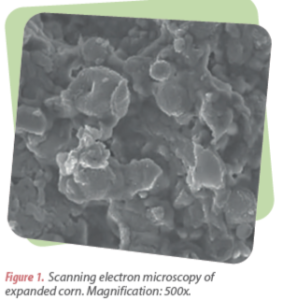
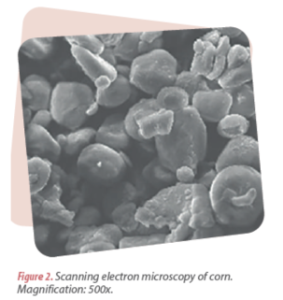
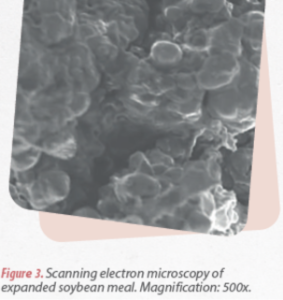
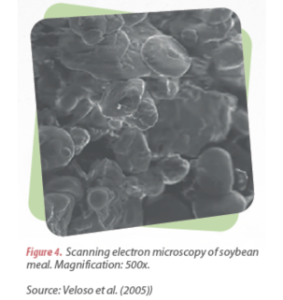
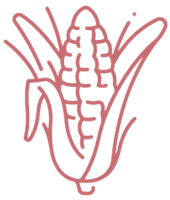 In another study, pigs in the nursery and finishing phases, fed diets based on corn and soybean meal with or without the inclusion of DDGS (dried distillers grains with solubles), showed a significant improvement in average daily weight gain, feed efficiency, and digestibility of dry matter, nitrogen, and gross energy in diets that underwent expansion.
In another study, pigs in the nursery and finishing phases, fed diets based on corn and soybean meal with or without the inclusion of DDGS (dried distillers grains with solubles), showed a significant improvement in average daily weight gain, feed efficiency, and digestibility of dry matter, nitrogen, and gross energy in diets that underwent expansion.
However, the authors noted that pigs fed diets containing DDGS showed even greater feed efficiency when subjected to conditioning by expansion (Feoli et al., 2008).

| Low-quality pellets do not withstand the forces of friction, impact, and pressure during storage, transportation, and shipment from the factory to the farm (Lowe, 2005; Mina Boac et al., 2006). |


Final Considerations
However, it is crucial that processing is done correctly to avoid over-processing or under-processing, which can lead to loss of nutritional quality due to issues such as the Maillard reaction or the formation of retrograded starch. These undesirable outcomes must be managed to ensure optimal feed quality and performance.
References available upon request
Subscribe now to the technical magazine of animal nutrition
AUTHORS

Nutritional Interventions to Improve Fertility in Male Broiler Breeders
Edgar Oviedo
The Use of Organic Acids in Poultry: A Natural Path to Health and Productivity
M. Naeem
Synergistic Benefits of Prebiotics and Probiotics in Poultry, Swine, and Cattle
Gustavo Adolfo Quintana-Ospina
Hybrid Rye Potential in Laying Hen Feed Rations
Gwendolyn Jones
A day in the life of phosphorus in pigs: Part I
Rafael Duran Giménez-Rico
Use of enzymes in diets for ruminants
Braulio de la Calle Campos
Minerals and Hoof Health in the Pregnant Sow
Juan Gabriel Espino
Impact of Oxidized Fats on Swine Reproduction and Offspring
Maria Alejandra Perez Alvarado